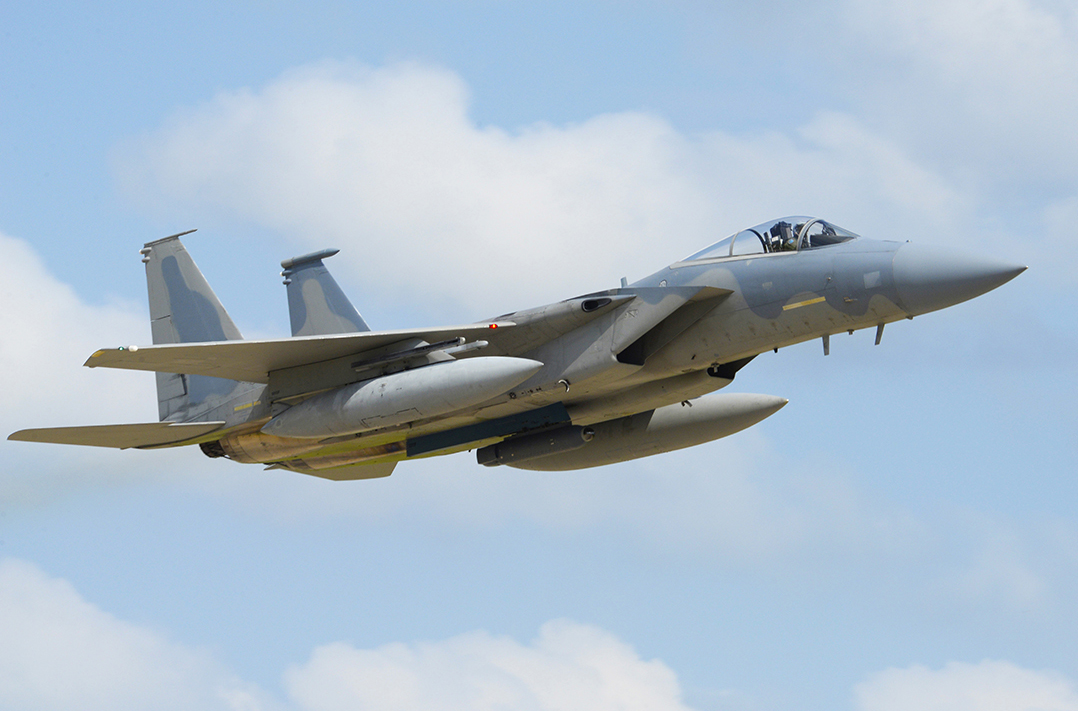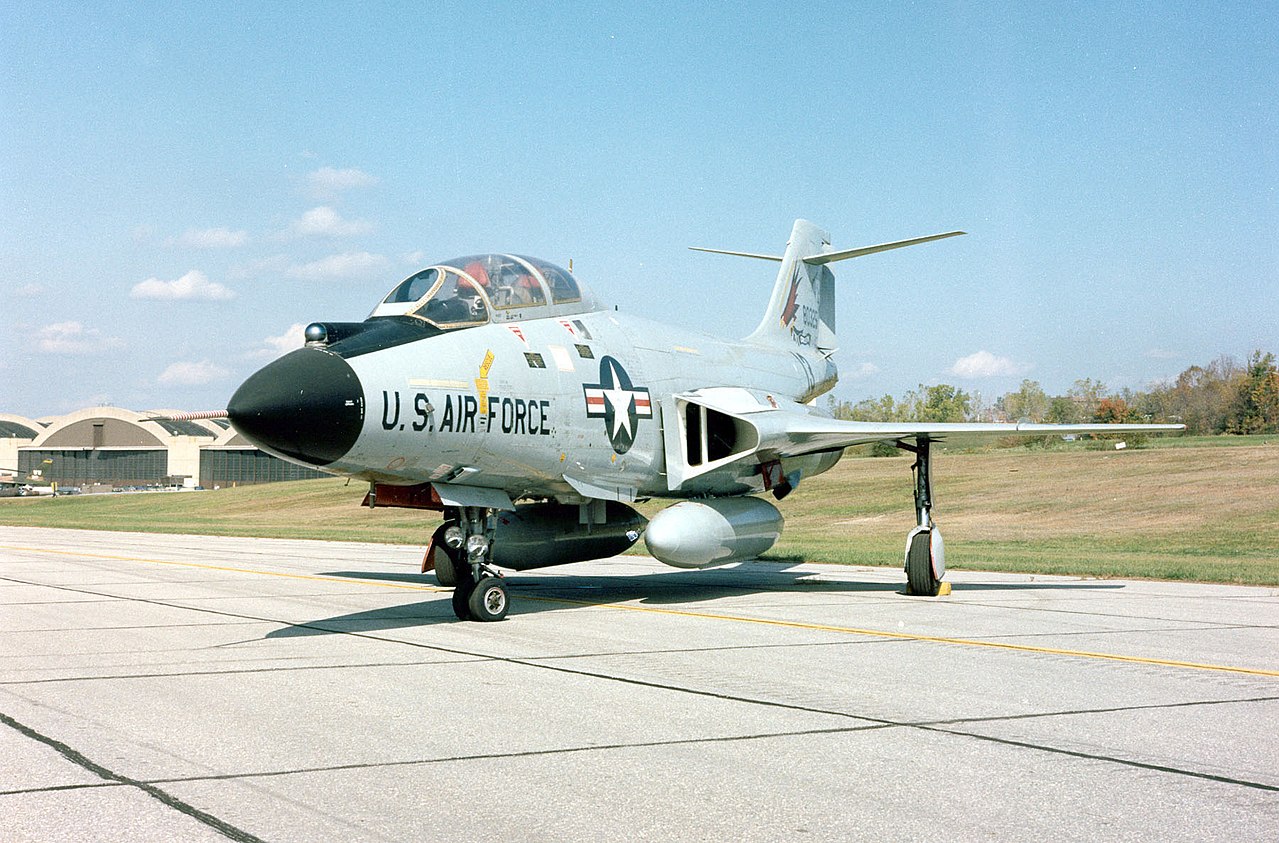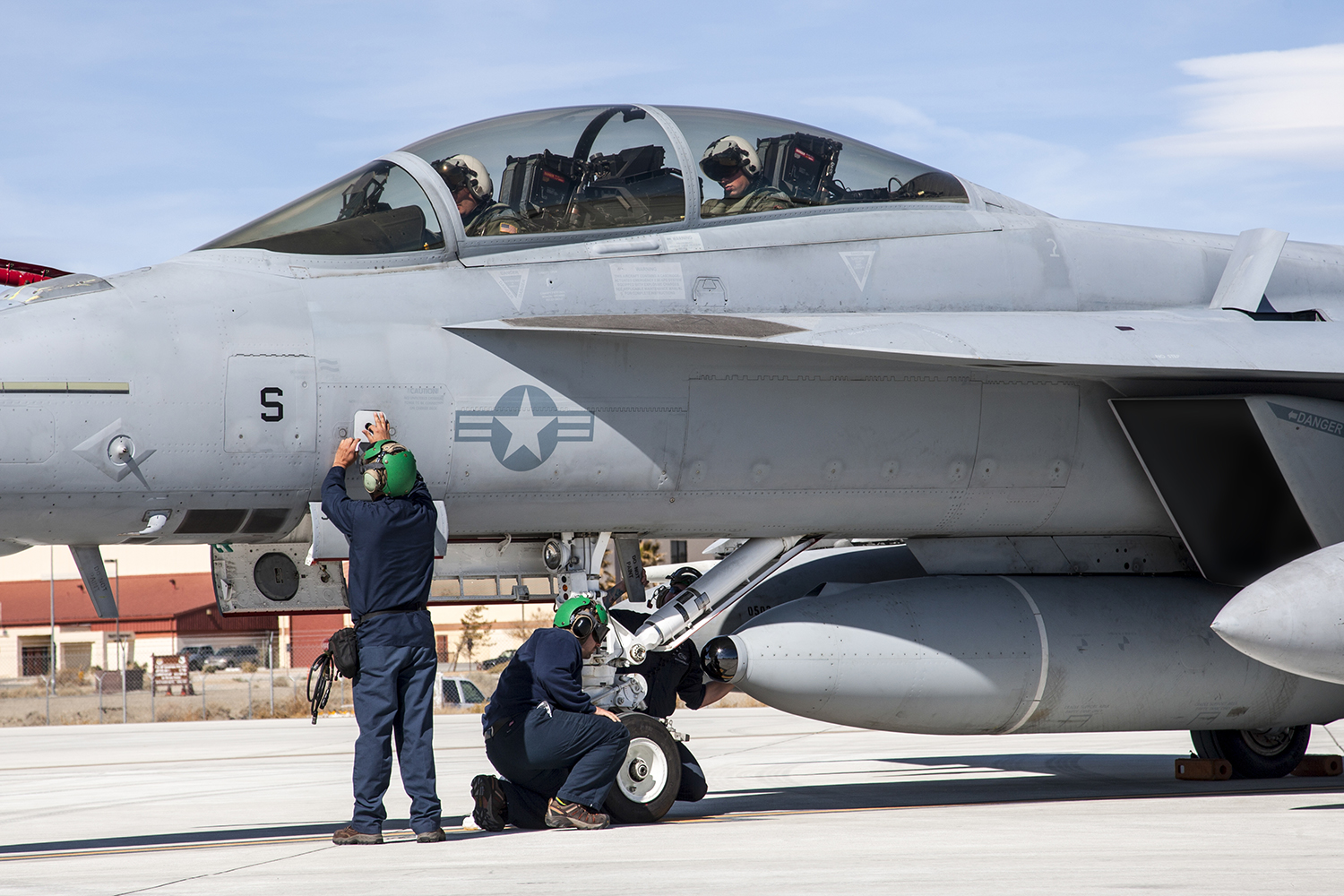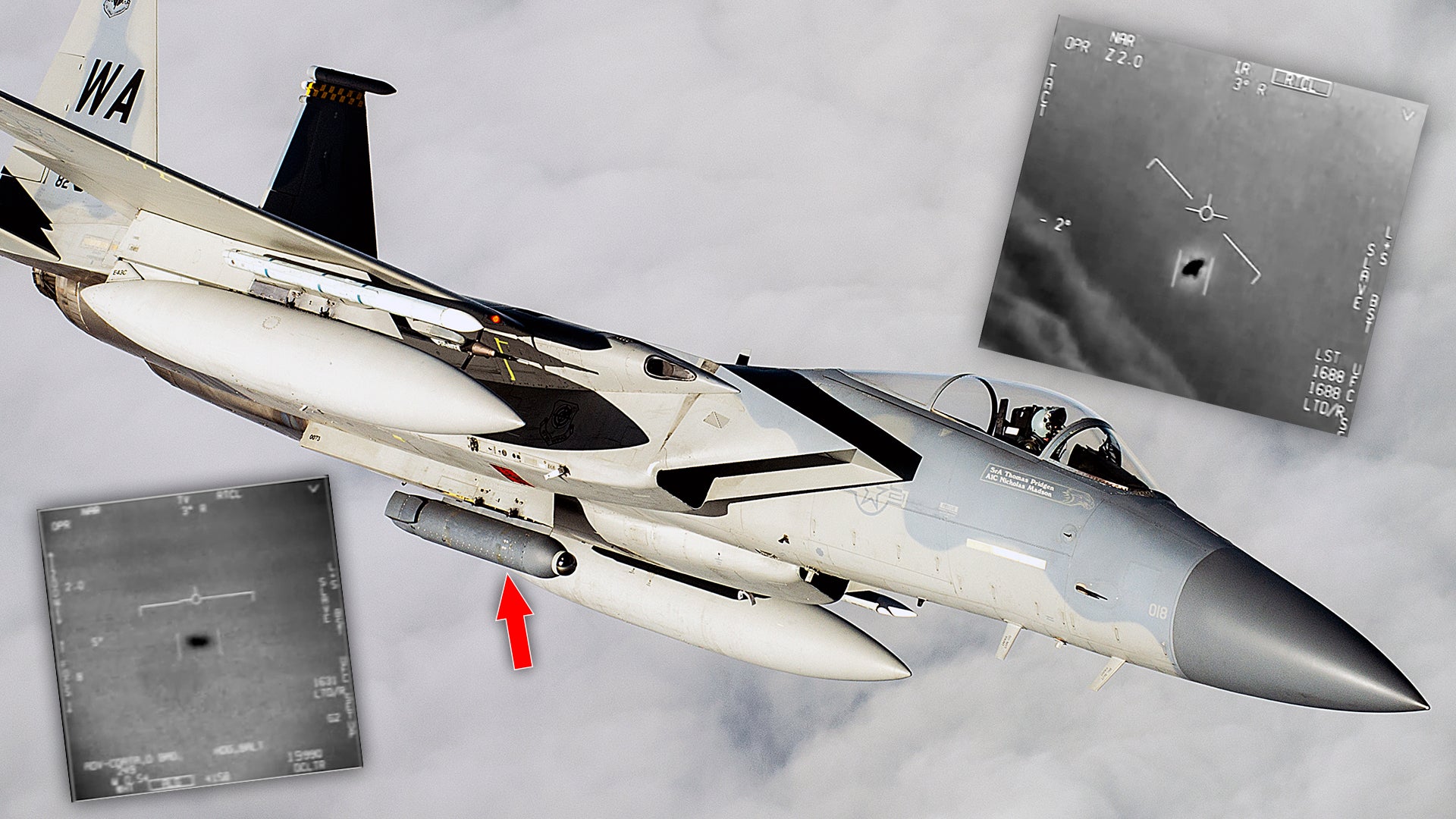America’s long and murky relationship with unidentified flying objects has taken an abrupt turn in recent years and especially in recent months as the Navy has officially admitted that its pilots are encountering things it cannot, or isn’t willing to explain, at an alarming rate. With this news, the establishment of high profile UFO-related groups like To The Stars Academy, as well as a new level of engagement by the press in regards to the topic, the public’s fascination with the phenomena has once again been elevated.
This American UFO renaissance of sorts was further catalyzed by a number of bizarre incidents involving U.S. Navy fighter pilots and puzzling objects operating within tightly controlled and highly monitored airspace. Regardless of what these things actually were, and in some cases, there are compelling explanations pointing to the possibility that they may be very much of terrestrial origin, we know that a relatively recent revolution in fire control radar technology was a major factor in detecting them. But there is about to be an even more relevant leap in U.S. fighter aircraft sensor capabilities that could prove far more significant when it comes to more easily detecting and classifying these strange objects, and thus explaining, or at least better defining some aspects of the phenomenon.
I was recently involved in a project that tasked me with deeply contemplating the technology that could be brought to bear when it comes to learning more about unidentified flying objects, regardless of their origin. During this process, it hit me that just as the proliferation of new fighter-borne active electronically scanned array (AESA) radars was key in detecting mysterious objects with low radar cross-sections that were flying in the vicinity of U.S. Navy fighter aircraft, a reality that The War Zone was first to report on in detail, the looming Pentagon initiative to field very capable infrared search and track systems (IRSTs) could have even a larger impact. It could even serve as the final technological element needed to springboard potentially revolutionary data collection on the phenomenon. As it sits now, not only is the Navy’s Super Hornet fleet slated to get IRSTs very soon, but the Air Force’s fighter aircraft tasked with protecting the homeland, and the F-15C, in particular, are also set to get these sensors.

IRSTs have been a major interest of mine for years. You can and really need to read this in-depth feature I did explaining how they work and why they matter and this recent follow-up for full context, but suffice it to say they fill a major and increasingly pressing sensor gap that exists across much of America’s tactical aircraft force.
IRSTs have been around for many decades, and back in the 1960s, many U.S. fighters and interceptors featured them. But in the last four decades or so, the U.S. has fallen far behind when it comes to fielding a modern iteration of the concept and integrating it as part of the Pentagon’s air combat doctrine. Russian aircraft have sported the technology consistently through the latter half of the Cold War, albeit with questionable utility, and have not stopped since. Beyond Russian fighters, allied jets like the pan-European Typhoon and French Rafale carry highly advanced IRSTs today. In fact, even recent export variants of the Strike Eagle are equipped with an IRST.

Although the performance of these systems was sorely lacking for many decades, the fact of the matter is that the IRST’s time has finally come. These sensors are far more sensitive than their predecessors and aided by fast computer processing and highly specialized software, as well as integration with the aircraft’s other sensors and mission computer, they are exponentially more capable than they were in the not so distant past.

While radars use the radio frequency spectrum to detect and track targets, something that can be challenging to do when said target has a low radar cross-section due to is size, shape, and/or coatings—in other words, it’s stealthy—or due to the presence of electronic warfare tactics that can jam, confuse, and spoof radars, IRSTs have no such limitations. They mainly work in the long-wavelength infrared band and are passive in nature. In other words, unlike radar, they emit no energy at all. Instead, they rapidly peer around the sky looking for targets that radiate or reflect infrared energy. The IRST’s main limitation isn’t really tied to enemy tactics at all, it’s atmospheric conditions that can adversely affect its detection ranges.
While IRSTs are increasingly important when it comes to countering stealthy fighters, and especially those that will increasingly operate in combat environments where electronic warfare tactics are being employed, those same attributes make them ideal for detecting, tracking, and further investigating the puzzling objects Navy pilots report encountering. In those cases, the craft are hard to continuously track on radar and in some cases, active jamming seemed to be employed against the pursuing fighter’s radars. In either case, the IRST would have remained totally unaffected.
Beyond being able to detect targets when radar cannot, or at least when it can’t consistently, the IRST’s benefits are synergistic as it can work in tandem with the jet’s radar and targeting pod to detect, track, and gain telemetry and visual information on the target in question. For instance, the IRST can be cued to the targets the fighter’s radar detects, and it can do this over significant ranges. This means that even if the radar loses lock intermittently, it can more easily regain it as the IRST will continue to track the object. In addition, because of the IRST, a lock of some type is never actually lost. As a result, far more resilient tracking can be realized against stealthy targets or those that are employing electronic warfare tactics. Conversely, if the target has a faint infrared signature, but radar can detect it, the IRST can regain tracking the target more easily with the help of the radar or it can begin tracking it once it has come close enough to the IRST sensor to be detected.
Beyond that, IRSTs allow fighter pilots to hunt and even engage aerial opponents ‘silently,’ as in without turning on their radar at all. The radar’s emissions can give away not only the presence of the fighter it is attached to, but also its location. So, the IRST can act independently of radar entirely and be used as a primary, standalone air-to-air sensor system.

Also, remember that radar and IRST are just two of the fighter’s three primary sensors. The third one is the targeting pod, which leverages infrared sensors, as well, but does so in a very different manner than the IRST. There is actually a fourth primary sensor group, that being electronic support measures (ESM)/radar homing and warning receiver (RHWR), but as far as we know, these mysterious objects don’t emit RF energy that can be detected by these systems.
Traditionally, targeting pods are used for laser-designating ground targets and for non-traditional reconnaissance, but they are also used for enhanced-range visual detection and tracking of aerial targets. This was a secondary function for many years of various targeting pods, but more recently it has become a primary one. While Super Hornets carry the Advanced Targeting Forward Looking Infrared (ATFLIR) targeting pods primarily for ground attack and surveillance, the USAF’s F-15Cs have adopted the more capable Sniper targeting pod specifically for long-range high-definition identification of airborne threats. This is very useful for Air National Guard F-15 units that sit alert, patrol America’s vast maritime borders, and protect the country’s coastal population centers from airborne attack.

The Sniper pod’s long zoom and high-definition optics allow Eagle pilots to positively identify an aerial target far sooner than they can with the naked eye and especially in the dark of night. This is a very important capability to have for pilots that may be charged to rapidly make life and death decisions, such as to take down an aircraft that may threaten the homeland. USAF F-15C Eagles with Sniper pods are also now deploying abroad and using the system for similar purposes during counter-air patrols over foreign territory.
Yet any of America’s fighters, almost all of which carry targeting pods or have similar internally mounted systems, can slave the pod’s optics to a target that its radar sees automatically or the pilot can manually steer the pod’s sensor to ‘latch on to’ and track an airborne object. We see this in action in the “Go Fast” and “Gimbal” videos released by the Pentagon that supposedly show UFOs. I don’t believe these videos show anything really out of the ordinary at all, and certainly nothing definitively so, and there has been some very good forensic analysis done on them already that reinforces this point of view. Mick West, in particular, has really done compelling work on this topic. Some of his videos are posted below and are worth consideration. The third video that was released, the one of the infamous “Tic Tac” from 2004, looks like, well a Tic Tac, at least to me. Regardless, they all show FLIR footage taken by Hornets’ targeting pods.




These pods, which operate at shorter infrared wavelengths than IRSTs, have a far more limited range compared to radar and IRSTs and they are not designed specifically to rapidly scan huge swatches of sky to pick out potential targets, nor sort and classify them. What they can do is gather far higher fidelity information on a target once it is within relatively close range. While some IRSTs are able to produce an image of a target, their visual fidelity is in most cases lacking compared to targeting pods operating at shorter IR wavelengths with optics specifically tailored for high visual fidelity. In fact, most targeting pods also have TV/electro-optical sensors, as well, that record in full color on the visual spectrum.
So, what you have is a suite of three complementary sensors—radar, IRST, and targeting pod—that work together to maintain tracking on a target and collect disparate forms of data on said target. Radar has the longest reach, followed by the IRST which has intermediate range, followed by the targeting pod. But regardless of range, the IRST can spot what the radar can’t, and the IRST, like the radar, can put the targeting pod’s imaging sensors on the target, as well. Without the IRST, if the radar loses the target before the targeting pod is within range, and it can’t re-acquire it, that’s that.
The Sniper Advanced Targeting Pod:


Both the Air Force and the Navy are leveraging Lockheed’s AN/ASG-34 IRST21 sensor, which has evolved over nearly three decades into its current Block II form. The Super Hornet will carry the sensor in a specially designed centerline fuel tank, while the F-15C carries it in an open architecture payload pod known as the Legion Pod. The Super Hornet will be able to carry the IRST and a targeting pod at the same time. It’s not clear if the F-15C will be able to do the same as currently the Sniper Pod and the Legion Pod occupy the same centerline station, but with data-link connectivity, the targeting telemetry from the IRST pod can be passed from the carrying aircraft to others in the formation, such as another F-15C carrying a Sniper targeting pod.
Eventually, the Legion Pod and IRST21 will migrate to other U.S. fighter types, like the F-16. In fact, the system has been operating on shadowy F-16s flying out of Area 51 for some time, and before that, the 64th Aggressor Squadron tested the IRST21 during a Red Flag exercise.
The F-15C’s Legion Pod and the Super Hornet’s centerline tank-equipped IRST21 will be fielded operationally within the next two years and this widespread deployment, alongside the powerful AESA radars and targeting pods that equip both types, could result in a major breakthrough, or at least a major uptick, when it comes to detecting and gathering information on so-called unidentified flying objects, if they are indeed out there. Although we may not be privy to what comes of any of this, it could at least give our pilots and intelligence officers a better idea of what they are encountering.

Once again, it was the widespread deployment of fighter-borne AESA radars that largely led to the reports of the encounters we know of in the 2014-2015 timeframe, so there is a chance that the introduction of IRSTs could result in a similar if not more pronounced subsequent disclosure of future incidents. Maybe the Pentagon already knows this and it is a factor in their decision to change the procedures by which its personnel, and its pilots, in particular, report such encounters.

The events off the eastern seaboard in 2014-2015 were remarkably widespread. Yet the base commanders seemed to have received no explanations or help from higher powers even after a safety report was filed following a near miss with a strange object. In the end, they resorted to posting Notices To Airman (NOTAMs) supposedly stating that there were hazards in the sky outside of their control in the restricted training areas where their pilots frequently drill. If these events crop back up again, that is if they ever really stopped entirely, aircrews and base commanders will likely know far more about the nature of what they are seeing then they did before the deployment of advanced IRSTs.
It’s also worth noting the majority of these encounters were limited to radar. If some of these radar returns are in fact the result of electronic warfare tactics, the IRST will work as an independent source of tracking data to confirm this. There has been lots of talk of extreme bursts of speeds and altitude variations that are reminiscent of electronic warfare manifestations on radar. The IRST is not impacted by any of this, so it can work as a hard check to validate what is actually out there and what isn’t.
With all this in mind, the Pentagon may be about to get more than it bargained for in regards to what its long-awaited advanced IRSTs can and can’t detect during daily operations. On the other hand, they may prove that some of what supposedly is there, isn’t, or that some of the performance characteristics associated with these mystery objects don’t mesh with reality.
Contact the author: Tyler@thedrive.com
